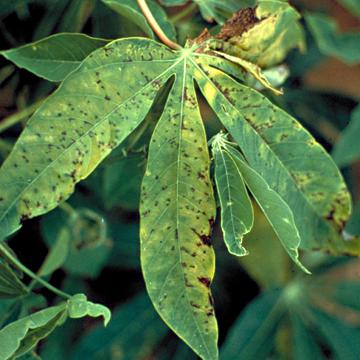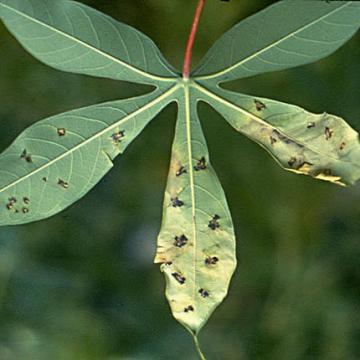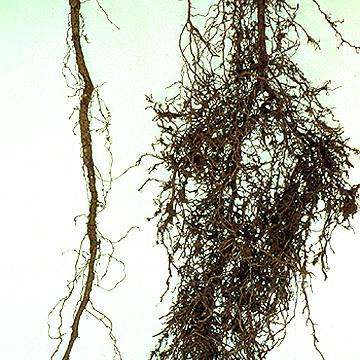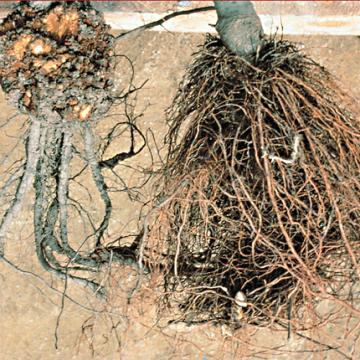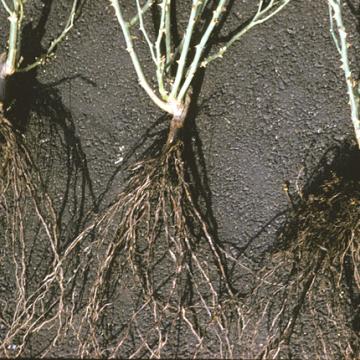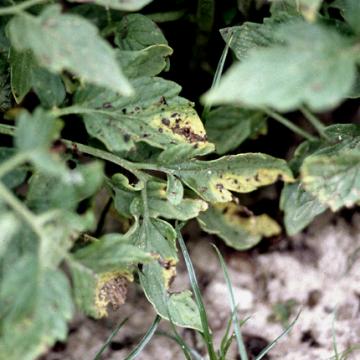DISEASE: Bacterial leaf spot (Bacterial necrosis)
HOST: Cassava
Cassava with yellowish leaves and water-soaked, angular spots. The disease is primarily on foliage, although the pathogen may invade stem buds and young branches.
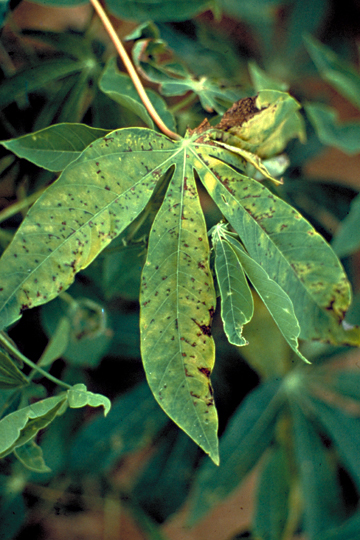
Bacterial leaf spot (Bacterial necrosis) | Cassava
DISEASE: Bacterial leaf spot (Bacterial necrosis)
HOST: Cassava (Manihot esculenta)
PATHOGEN: Xanthomonas cassavae
PATHOGEN SYNONYM: Xanthomonas campestris pv. cassavae
SOURCE: APS
DISEASE: Bacterial leaf spot (Bacterial necrosis)
HOST: Cassava
Cassava with brownish lesions and blackish edges. Leaves turn yellow with multiple infection sites.
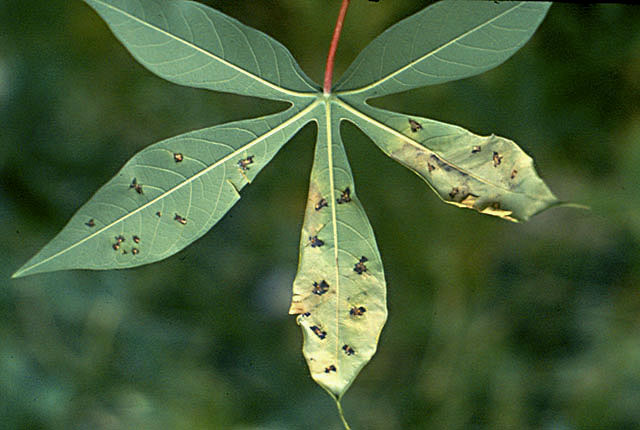
Bacterial leaf spot (Bacterial necrosis) | Cassava
DISEASE: Bacterial leaf spot (Bacterial necrosis)
HOST: Cassava (Manihot esculenta)
PATHOGEN: Xanthomonas cassavae
PATHOGEN SYNONYM: Xanthomonas campestris pv. cassavae
SOURCE: H. Maraite, A. Alvarez
DISEASE: Hairy root
HOST: Rose
Hairy root symptoms of many fibrous roots (right). Noninfected root (left).
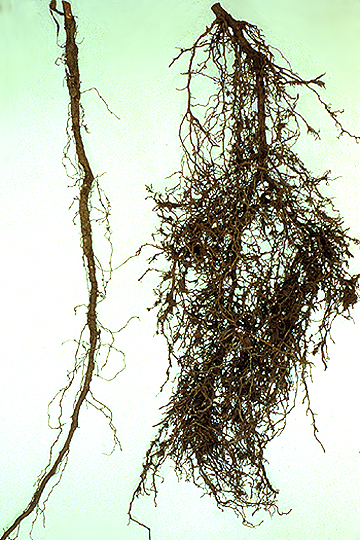
Hairy root | Rose
DISEASE: Hairy root
HOST: Rose (Rosa sp.)
PATHOGEN: Agrobacterium rhizogenes
SOURCE: R. Raabe
DISEASE: Hairy root
HOST: Apple
Crown gall (left) and hairy root (right) caused by Agrobacterium tumefaciens and A. rhizogenes, respectively.
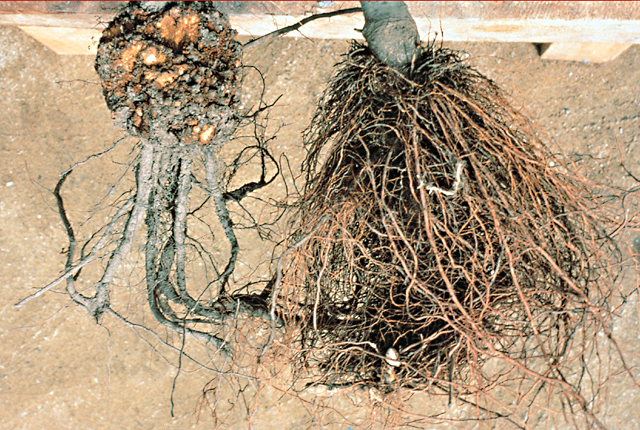
Hairy root | Apple
DISEASE: Hairy root
HOST: Apple (Malus domestica)
PATHOGEN: Agrobacterium rhizogenes
PATHOGEN SYNONYM: Rhizobium sp.
SOURCE: APS
DISEASE: Hairy root
HOST: Rose
Crown gall (left) and hairy root (right) caused by Agrobacterium tumefaciens and A. rhizogenes, respectively. Healthy root (center).
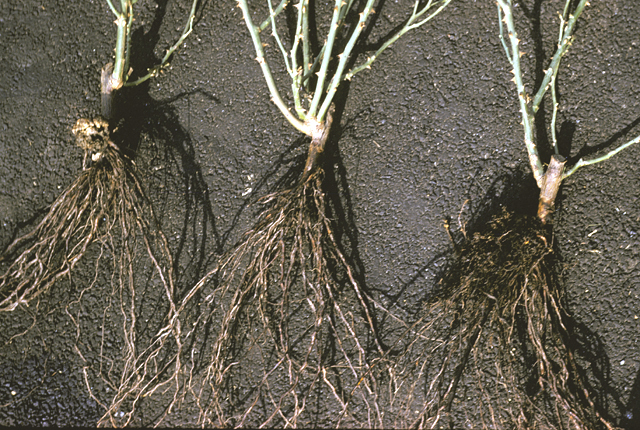
Hairy root | Rose
DISEASE: Hairy root
HOST: Rose (Rosa sp.)
PATHOGEN: Agrobacterium rhizogenes
PATHOGEN SYNONYM: Rhizobium sp.
SOURCE: M. Schroth
DISEASE: Syringae leaf spot
HOST: Tomato
Leaves with brown necrotic lesions and chlorotic margins. Symptoms vary greatly among cultivars. Some have black or brown lesions with bright yellow, chlorotic areas and others do not have yellowing.
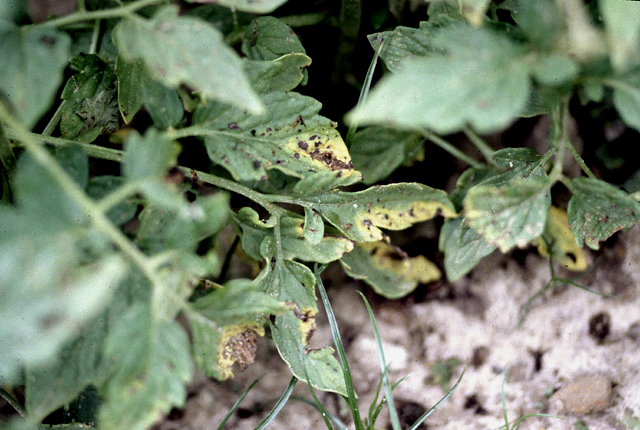
Syringae leaf spot | Tomato
DISEASE: Syringae leaf spot
HOST: Tomato (Lycopersicon esculentum)
PATHOGEN: Pseudomonas syringae pv. syringae
SOURCE: R. Gitaitis


